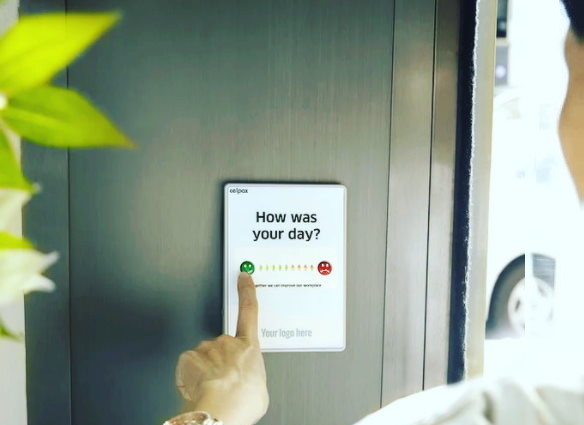What Your Transport Business Can Do To Promote Safe Driving Behaviours
Safe Driving Tips For Your Employees
Transport businesses are dependent on safe driving. Bad driving leads to accidents, the result of which is jobs not getting completed and future work being lost.
Every driver has an idea of what it means to drive safely.
But that’s not to say we can’t be guilty of doing things that are unsafe, or that we shouldn’t review how we behave behind the wheel.
In this article, we’ve explained what safe driving is, how to promote it and give suggestions for how you can get your staff on board.
So here we go, 6 safe driving tips for employees:
Tip 1: Have a policy on what safe driving is (& bad driving habits are)
Safe driving is one of those concepts that sounds more straightforward than it is.
While it’s pretty clear it means not having accidents, once you get into the details there are a huge number of behaviours that could be considered unsafe.
This is why it’s important to explain exactly what you mean by unsafe driving.
And then put it into a policy document that explains the standards you expect of your employees.
There are some obvious things you want in your driving safety policy:
- Never drive under the influence
- Keep to the speed limit at all times
- Don’t use your phone while at the wheel
- Use a seatbelt
But these are just the basics.
To go to the next level, it’s not just about knowing what these bad driving behaviours are.
It’s also about understanding the consequences of unsafe driving.
This is key. Why?
Because you need to not only make your drivers aware of the standards they need to follow. You must also appreciate the costs that failure to uphold them brings.
For your company, it’s saving unnecessary insurance, legal and reputational costs.
For your drivers, it’s saving their lives and getting them home safely to their families at the end of the day.
There are also additional concerns like lost wages if the company policy doesn’t cover 100% of their time off work.
Long-term sick leave also tends to take a toll on mental wellbeing, etc.
Lastly, if a worker has an accident and is on sick leave, it might be that coworkers have to step in and do extra hours or extra work to cover until the person is back. That impacts employee morale.
It’s a good idea to start by having a clear policy on what safe driving is and then you can begin promoting these behaviours.
Tip 2: Safe driving tips for employees and the role of team managers
When we’re talking about a policy on driving safety, we’re not just talking about behaviours related to the drivers.
It’s also about the team manager.
He or she needs to respect that someone shouldn’t answer their phone if they’re in the middle of a complicated parking manoeuvre. Or engage in long calls while at the wheel.
And of course, your company should offer hands-free solutions for added safety on the road. All in accordance with local laws and best practices.
Further, when it comes to respecting speed limits, do your employees feel pushed to reach destinations in impossible times?
Do they feel comfortable speaking up if this is the case?
What happens to mandatory breaks if the stress is too high?
Do you adjust the expected time of delivery due to weather conditions?
You as an employer lay the foundations to road safety at work.
Safe driving tips for employees also apply to your managers!
At all levels.
3. Get your drivers to take the pass plus
Driving tests are a rite of passage.
It’s the moment when you gain the independence to travel where you want when you want.
But while many people stop at the standard and practical test, you can take an additional test to make you a safer driver — the Pass Plus.
The Pass Plus is a practical test for UK drivers. It’s a training course that promotes safe driving behaviours and takes a minimum of six hours to complete.
There are other equivalent training courses in other countries if you shop around.
The cost of the Pass Plus depends on where you live, how long the training takes and the instructor you sign up with.
However, it’s generally priced at around £200. It might be a good idea that you pay for your drivers to take it as they’ll learn the following skills to drive safer:
- All-weather driving
- Busy road (dual carriageways and motorways) driving
- Night driving
There are other driving skills taught during the Pass Plus course but these are the most important ones for haulage drivers.
The great thing about getting your staff to take an additional course is that it not only teaches them to be safer drivers but can also reduce your insurance premiums.
This is because it makes your drivers appear both safer and more experienced in the eyes of some (not all) insurance providers.
Get your staff to take the Pass Plus or defensive driving course and they’ll not only be safer drivers but employees who might cost less for your company to insure.
4. Telematics software to review journeys
Bad driving isn’t necessarily due to a lack of respect for other vehicles.
Often it comes down to a simple case of human error and this is often due to basic mistakes your drivers might not even realise they’re making.
While you can’t micromanage your employees to the extent that you sit in with them on their journeys, you could use telematics to understand how your drivers behave behind the wheel.
Telematics devices are installed on your vehicles.
They record data concerning driving behaviour, which helps you in the following was:
- You can see how fast your staff drive when in your vehicles
- You can establish how harshly your workers hit the brakes
- You can watch how forcefully your employees take any corners
Essentially, installing telematics in your vehicles allows you to take a proactive approach to driver coaching.
Of course, reviewing this data will take up time and that will cost your company money.
The upside is that if you’re able to introduce safer driving behaviours as a result then this can save your company from losing money to costly insurance claims, legal bills or reputational damage.
Install telematics in your vehicles, review the data and use this to help your staff to become safer operators.
Before going down this road though, you might want to have a conversation with your employees about WHY you’re adding this safety measure.
Your people might interpret this initiative in many ways. Some might feel surveilled.
Others might fear the consequences if your business detects unsafe driving. Because no one drives 100% perfect, right?
Stuff happens behind the wheel and many times it’s due to other drivers.
Show them you’re doing this for the right reasons and for their own good. Not to be a big brother that watches their every move.
The upside is that your people will discover new things about their driving too!
This can help them become better professionals on the road.
5. Reward the safest drivers in your business
We’ve explained why you need a clear policy outlining your company’s stance on safe driving.
We’ve provided a course that helps to promote defensive driving.
And we’ve given you a tool that allows you to review how safely your staff are driving.
What we’ve not done yet is highlight the importance of rewarding your staff for good behaviour.
This is a crucial part of the process because it helps to keep your employees happy and encourages them to do the things you’re asking of them.
While you might already have your own ideas of how you can recognise your well-behaving employees, there are a few things you may want to consider:
- Giving annual leave
- Providing gifts
- Offering bonuses
Though we think it’s incredibly important to use the carrot of rewarding your staff for defensive driving, we’re conscious that it can be tricky actually quantifying what success looks like — many businesses are unlikely to reward their employees for not having an accident!
With this in mind, a good approach could be to consider the amount of time you have to spend reviewing individual behaviours when assessing telematics data.
This helps to quantify what you’re doing.
But what happens if it takes you the same amount of time to review the information for two, three or more drivers?
Our recommendation is that you reward all of them equally at times too.
This will provide a boost for morale and show that you’re committed to rewarding good driving behaviours.
If you look at best practices in other industries, many manufacturing companies celebrate 4 months or 3 years without a lost-time incident.
One simple idea could be to organize a gift card lottery for your employees.
Every month that there are no lost-time injuries (or some other related KPI), one of your employees wins a prize like an extra holiday or a cash reward.
Or you can do a quiz as suggested in this leadership article.
This is also a great way to get your whole team behind the idea of driving safer and working together to achieve it.
It’s a win-win.
If you make it to 6 months or even a year, you can incentivize by spicing the offer. Offer a fancy holiday for example?
If you think it sounds expensive, focus on all the time and money (and health!) you’re saving on not having to deal with accidents.
6. Health & Safety Committee
In order for your workers to be productive and efficient in your business, it’s important they feel safe. Both on the road, and on your premises.
If you haven’t formed a safety committee at work, this is a great tip to promote safe driving tips for employees.
Ask for volunteers that are interested in getting involved in promoting health and safety.
You might need a carrot in terms of rewards if few show an interest (which might give you an indication of how much your business has left to establish a healthy driving culture).
This group of employees can then revise your safety policies and help out with spreading best practice tips while transporting goods.
They can come up with ideas and tips that they think will work for your business.
The Health & Safety Committee might go in directions you hadn’t thought of.
Like looking into angles such as what is the safest vehicle to drive for your type of business, crash rates, airbag designs, etc.
This sends a message to the rest of your employees that your organisation genuinely care about their safety on the road.
The group might also be better suited to find interesting workshops and safety material that they think will be a good fit for their colleagues.
What do they feel is missing from a safety point of view?
A course on how drivers can combat monotonous motorway driving?
Or workplace ergonomics adjusted to female workers (risk assessments tend to be based on a male norm, with longer arms, etc).
This is also a good forum to catch the little things that affect employee morale.
Such as being assigned a van that needs maintenance or is dirty or covered in scratches. Or a messy car, full of leftovers from the coworker that used the vehicle the last time.
Use fun driving videos for employees to show examples of good and bad driving.
It’s also interesting to create a focus group where you talk about behaviours.
Ask your people:
- if you catch your coworker smoking a joint before getting into the company van, what do you do?
- if you catch a coworker texting behind the wheel, what do you do?
If you have the raffle and the carrot of winning the prize of 1-year paid car insurance or that fancy holiday… it makes it easier to speak up about safety at work.
Create a safety culture based on positive behaviours, and catch someone doing something right!
To sum up
Having a clear policy on good/bad driving habits, getting your drivers to take the Pass Plus, using telematics and rewarding your drivers are all great ways your transport business can promote driving behaviours.
Get your team to hold each other accountable for health and safety!
Remember, it starts with you as a company. Accident-free driving starts at the top.
Our favourite safe driving tips for employees is for you as a leader to give your people the best possible support in the day to day to promote safety.
Ready to test our suggestions and tips?
You can then review the results over a set period of time.
Measure the mood!
What’s the impact of your leadership actions? Validate progress.
Photo credit: Wikimedia
Rodney Laws is an ecommerce platform specialist and online business consultant. He’s worked in the ecommerce industry for nearly two decades, helping brands big and small achieve their business goals. For more tips and advice, reach out to Rodney on Twitter @EcomPlatformsio.







